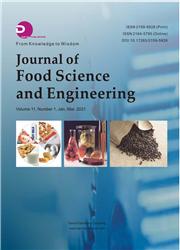An Assessment of Determinants Responsible for Low Mango Productivity in District Muzzafargarh, Pakistan
引用次数: 3
Abstract
Mango which is also known as the king of fruits in the country is the second largest growing fruit after citrus in Pakistan. Although mango is being grown in more than hundred countries none of them is comparable to Pakistani mango which is famous for its unique taste all over the world. Pakistan’s per hectare production is much lower than its potential. The purpose of this study was to assess those factors which are preventing mango growers from getting its potential yield. For this major mango producing area, Muzzaffargarh was selected. The 110 randomly selected farmers were interviewed with a well-designed questionnaire. The mango growers were divided into three categories on the basis of landholding. The Cobb-Douglas model was used to assess the effect of different factors on the productivity. The education level and age of large farmers was found highest among small and medium farmers. Large farmers were enjoying significant high profit per acre with US$519.58 as compared to medium farmers (US$454.15) and small farmers (US$395.10). The independent variables were explaining almost 89 percent variation in productivity of mango. The significant positive effect of orchard experience, access to extension services, the quantity of NPK, quantity of pesticides and labour cost was found. The age and intercropping practices in mango orchard had a significant negative effect on mango production. Credit facilities must be made available at lower interest rate and the range of extension services must be enhanced to increase the productivity of mango.巴基斯坦Muzzafargarh地区芒果生产力低下的决定因素评估
芒果在巴基斯坦也被称为水果之王,是仅次于柑橘的第二大种植水果。尽管芒果在一百多个国家种植,但没有一个国家能与巴基斯坦芒果相比,巴基斯坦芒果以其独特的味道闻名于世。巴基斯坦的每公顷产量远低于其潜力。这项研究的目的是评估那些阻碍芒果种植者获得潜在产量的因素。在这个芒果主产区,穆扎法尔格尔被选中。随机抽取的110名农民接受了精心设计的问卷调查。芒果种植者根据土地所有权分为三类。Cobb-Douglas模型用于评估不同因素对生产力的影响。大农户的教育水平和年龄在中小型农户中最高。与中等规模农户(454.15美元)和小型农户(395.10美元)相比,大型农户的每英亩利润高达519.58美元。自变量解释了芒果生产力近89%的变化。果园经验、获得推广服务的机会、NPK的数量、杀虫剂的数量和劳动力成本都有显著的积极影响。芒果园的年龄和间作方式对芒果产量有显著的负面影响。必须以较低的利率提供信贷,并必须扩大推广服务的范围,以提高芒果的生产力。
本文章由计算机程序翻译,如有差异,请以英文原文为准。
求助全文
约1分钟内获得全文
求助全文

 求助内容:
求助内容: 应助结果提醒方式:
应助结果提醒方式:


